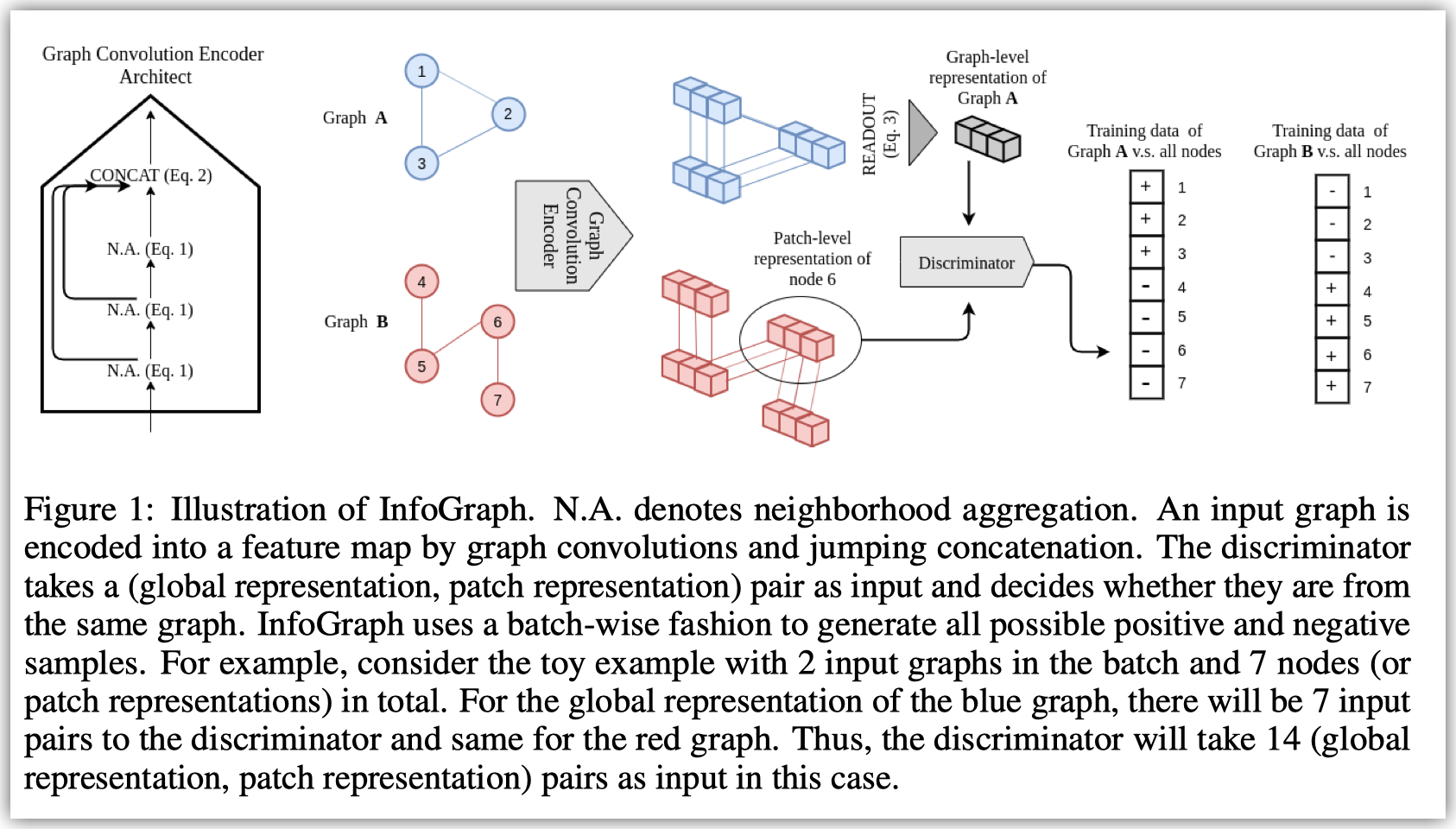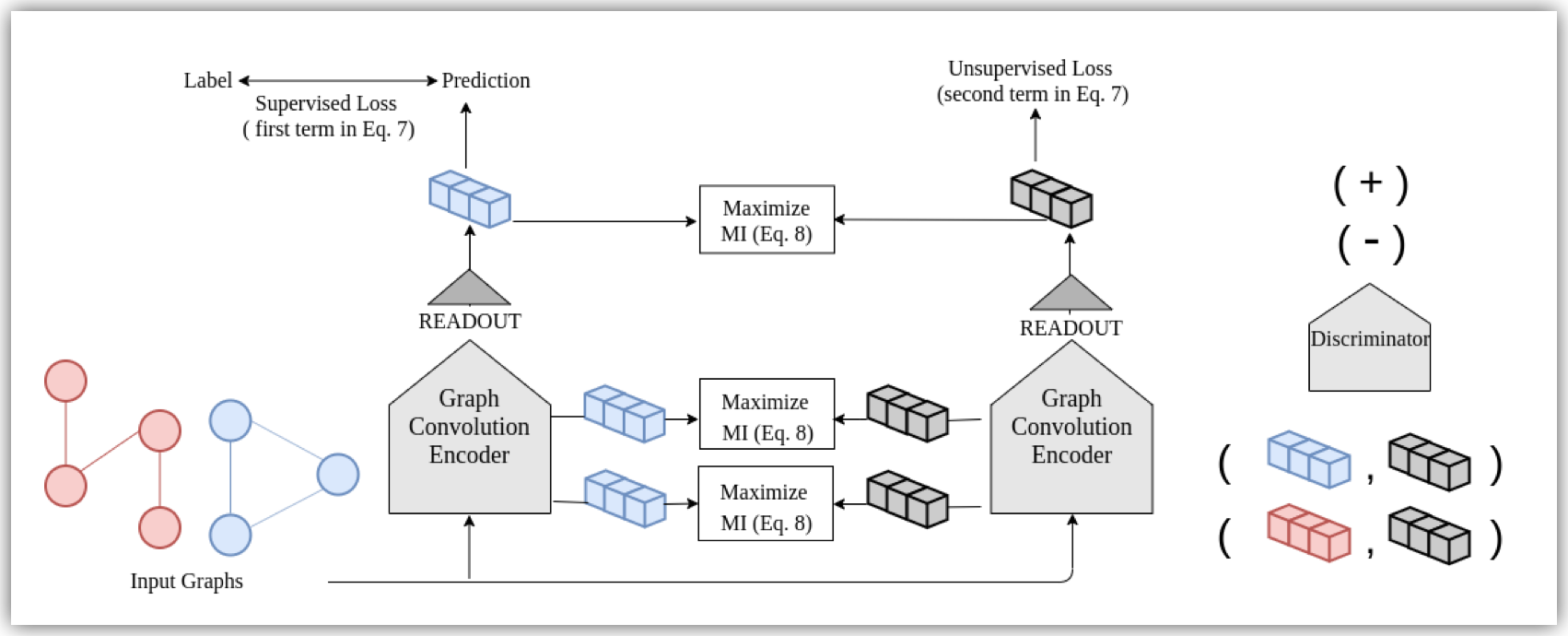InfoGraph Unsupervised and semi supervised graph l
这篇文章聚焦于用无监督或者半监督的方法学习graph embedding. 这里有两个关键点, 首先InfoGraph学习的是全图的embedding而不是node embedding. 其次这篇文章立足于无监督方法. 全图的embedding 学习实践中可能有很多用处, 比如用来表示分子结构, 或者调用链.
作者代码: https://github.com/fanyun-sun/InfoGraph
DGL复现: https://github.com/hengruizhang98/InfoGraph
一个基本的encoder的结构包括若干层的AGGREGATE+COMBINE和一层CONCAT.
输入的feature是每个节点的node feature.
对每一层而言, 可以表示成如下形式:\(h_v^{(k-1)}\to h_v^{(k)}\),从第k-1层的feature得到第k层的feature
具体来说这篇文章采用了GIN: \(\mathbf{x}^{\prime}_i = h_{\mathbf{\Theta}} \left( (1 + \epsilon) \cdot\mathbf{x}_i + \sum_{j \in \mathcal{N}(i)} \mathbf{x}_j \right)\)
We use GIN Xu et al. (2018a) while DGI uses GCN Kipf & Welling (2016) as GIN provides a better inductive bias for graph level applications
最后一层concat是为了考虑不同尺度的聚合结果.
最后从单点的feature到全图的feature (a.k.a., READOUT), 这篇文章采用了SUM
For example, we use sum over mean for READOUT and that can provide important information regarding the size of the graph.
在训练时, InfoGraph考虑最大化每一个mini-batch内的互信息.
对于每一个graph feature和node feature, InfoGraph希望这个distriminator(\(T_{\phi, \psi}\))能够区分两者是不是属于同一个图.
进一步地, 这篇文章扩展到semi-supervised场景.
直接在训练上述encoder的时候加上supervised loss (如下图), 可能会导致negative transfer的问题 (按我理解这里只是存在这样的可能, 具体会不会也没有很强的说理或者实验证据)
However, supervised tasks and unsupervised tasks may favor different information or a different semantic space. Simply combining the two loss functions using the same encoder may lead to “negative transfer”
因此这篇文章提出下如下的框架
此时InfoGraph* 同时训练两个相同结构的encoder.
左边的encoder通过label去直接有监督地训练, 右边的encoder通过无监督的方式去训练.
为了将无监督学习到的特征表示转移到有监督的encoder, 在训练时会最大化两个encoder学到的表示的互信息. 特别地, 这里不仅仅是最终的表示, 而是每一层的表示.
Created : February 13, 2023




